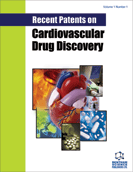Abstract
Percutaneous coronary intervention (PCI) has been increasingly used in the last years during interventional procedures in patients with acute coronary syndromes (ACS) including ST elevation myocardial infarction (STEMI) and non-ST elevation myocardial infarction (NSTEMI). In patients with either STEMI, NSTEMI, high risk ACS with EKG changes or cardiac enzymes rises; PCI with bare metal stent (BMS) implantation has been associated with a significant improvement in clinical outcome. Therefore, BMS implantation during primary PCI in STEMI has become a standard of practice. With the introduction of drug eluting stents (DESs) in this decade, the use of these new devices instead of BMSs in patients with STEMI has emerged as a rational PCI alternative in this particular subgroup of patients. In spite of the unquestionable benefits of DESs in terms of reduction of restenosis and TVR, specific concerns have arisen with regard to their long-term safety. High incidence of very late stent thrombosis has been described with these devices, and special attention should be paid in patients with unstable coronary lesions, in which plaque composition and remodeling may play a main role in their safety and long-term outcome. Intraluminal thrombus caused by plaque rupture is the most frequent mechanism of STEMI, in which the necrotic core and thin fibrous cap play a major role. In this context, the use of first DESs designs may be futile or even unsafe because delayed healing may further contribute to plaque instability. Adjunctive invasive imaging tools can improve stent deployment and safety outcome in these lesions with intravascular findings of plaque instability. Recently, other players such as new dedicated antithrombotic BMS designs, including selfexpanding stents or drug-eluting coated balloons, are exploring their potential indications in patients with ACS and myocardial infarction. This paper reports and discusses new stent devices and adjunctive pharmacologic agents. It also mentions and describes the recent patents of devices invented to use in these complex lesions subsets.
Keywords: Acute myocardial infarction, bare metal stent, biodegradable polymers bioresorbable stent, drug eluting balloon, drug-eluting-stent, Percutaneous coronary intervention, late-acquired stent malapposition, DES IMPLANTATION, COMPLEX LESIONS, Latest DES Technology
 10
10


